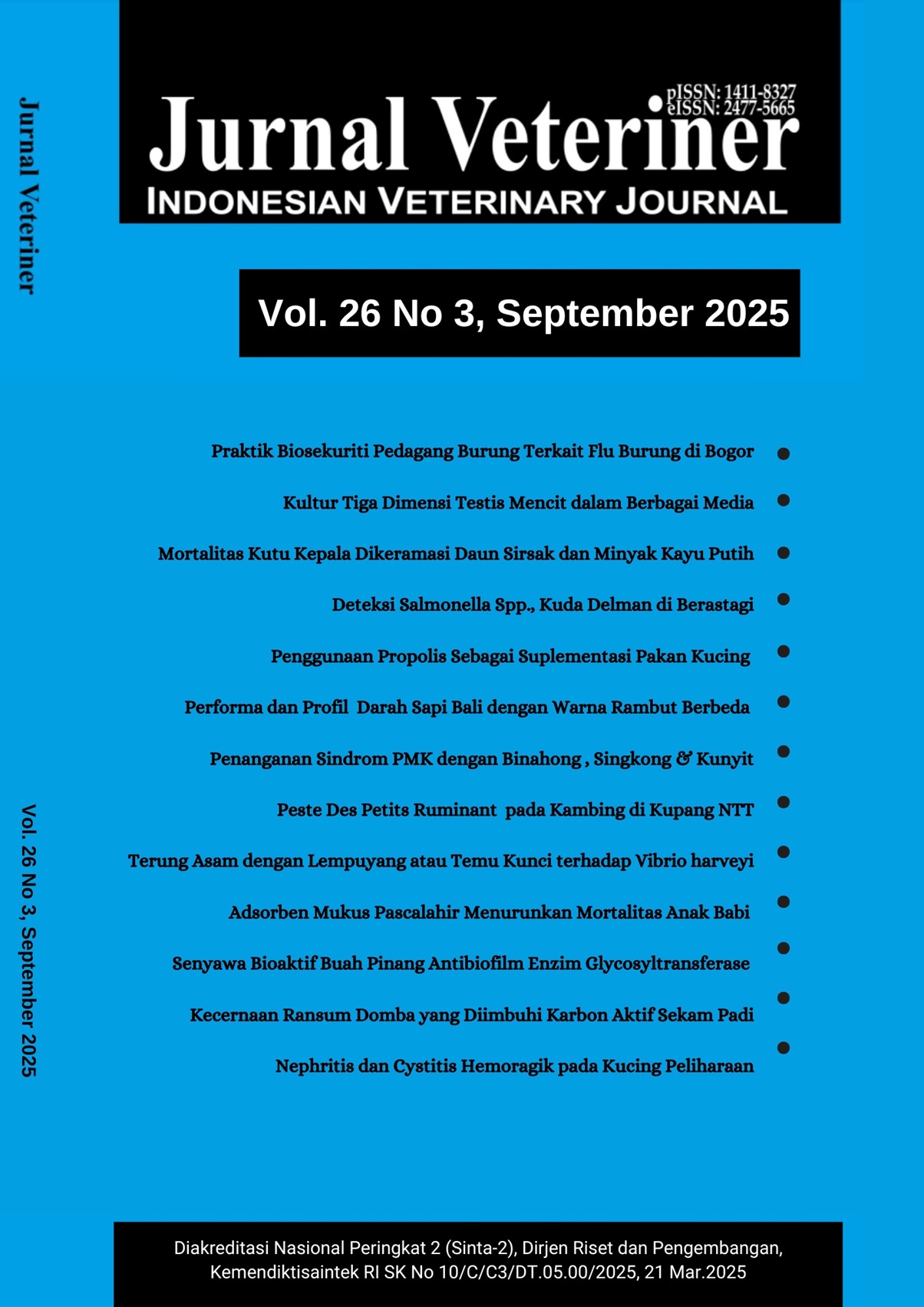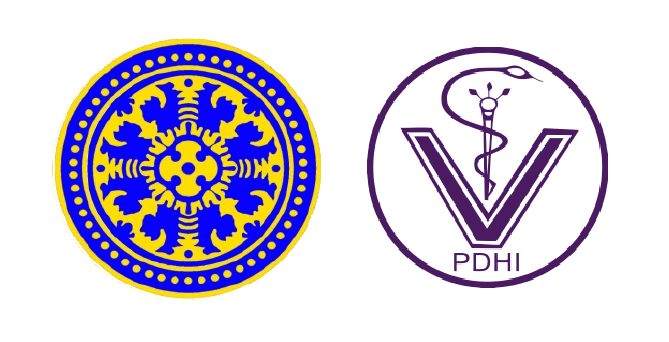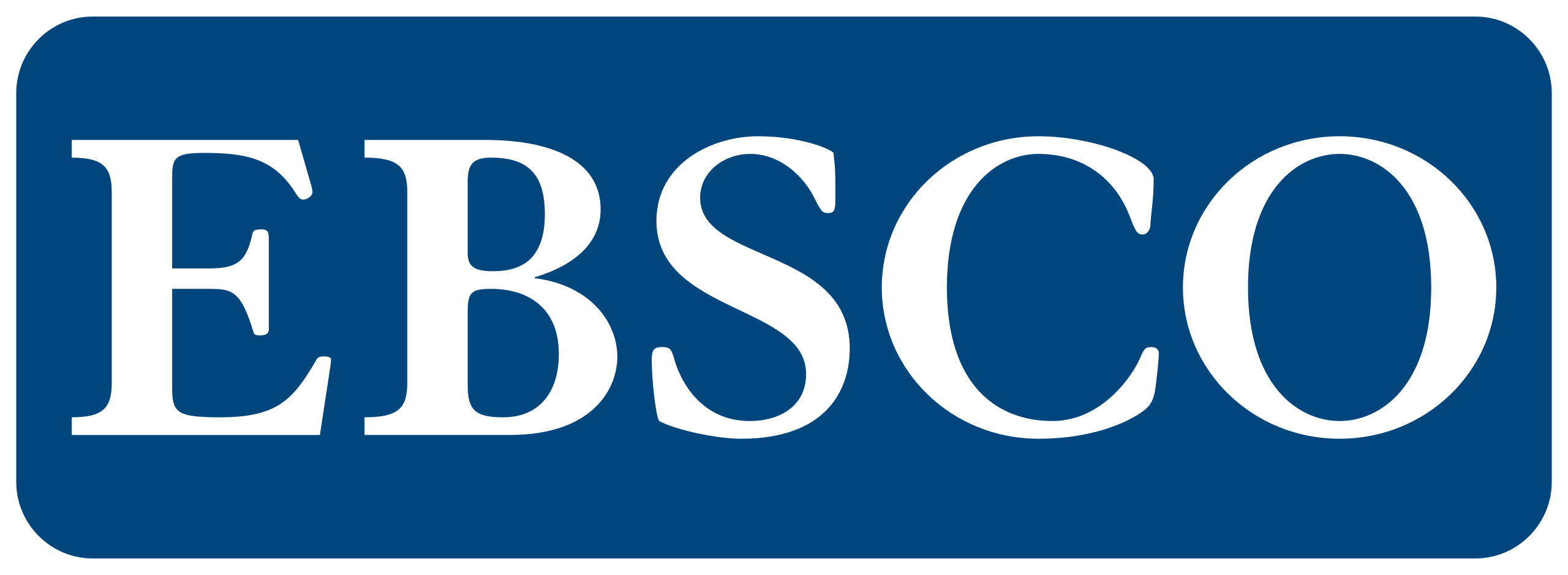Effectiveness of Treating Foot-And-Mouth Disease Syndrome in Cattle Using Extracts of Binahong Leaves, Cassava Arabica, and Turmeric
DOI:
https://doi.org/10.19087/jveteriner.2025.26.3.362Keywords:
cattle with FMD, binahong (Anredera cordifolia), cassava arabica (Manihot esculenta), turmeric (Curcuma domestica Val.)Abstract
Foot-and-Mouth Disease (FMD) in livestock is an infectious disease caused by a virus from the Aphtovirus genus. It affects ruminant animals (such as cattle, buffalo, goats, sheep, deer), pigs, camels, and several species of wild animals. This disease often worsens when secondary bacterial infections occur. Theoretically, FMD cannot be cured because it is caused by a virus. This study aims to evaluate the management of FMD cases through symptomatic, supportive, antibiotic treatments, and the use of herbal medicines to prevent secondary infections. Three treatment groups were established: Group 1 received pharmaceutical treatment (injection of vitamins and antibiotics, and spraying of wounds with physiological NaCl solution); Group 2 received treatment with extracts of binahong leaves, cassava arabica leaves, and turmeric; and Group 3 received a combination of pharmaceutical treatment (injection of vitamins and antibiotics, and wound spraying with NaCl solution) along with herbal treatment. For the combination group, wounds on the feet and mouth were sprayed three times daily with a clean condition maintained, using a mixture of binahong, cassava arabica, and turmeric extract (BSK extract). Additionally, 1000 ml of BSK decoction was administered orally at each treatment session, concurrent with wound care, for five consecutive days. Statistical analysis of the results showed that treatment in Group 3 (pharmaceutical combined with BSK extract) resulted in a significantly better healing rate (p < 0.05) for lesions on the mouth, gums, and feet compared to the control group (pharmaceutical treatment alone) and Group 2 (BSK extract treatment alone). However, further research with a larger number of cattle is necessary to obtain more comprehensive and optimal results.
Downloads
Published
Issue
Section
License
Copyright (c) 2025 Euis Nia Setiawati, Ibnu Mahmudin, Vony Armelia (Author)

This work is licensed under a Creative Commons Attribution 4.0 International License.
License Terms
This journal applies the terms of the Creative Commons Attribution 4.0 International License (CC BY 4.0).
Under this license, authors retain copyright and grant the journal the right of first publication. The published articles are freely available and can be:
-
Shared – copied and redistributed in any medium or format.
-
Adapted – remixed, transformed, and built upon for any purpose, even commercially.
Conditions:
-
Attribution – Appropriate credit must be given to the original author(s) and the source (the journal), a link to the license must be provided, and indication of any changes made must be included.
-
No additional restrictions – The licensor cannot apply legal terms or technological measures that legally restrict others from doing anything the license permits.
By submitting and publishing in this journal, authors agree to make their work available under the CC BY 4.0 License.
For more details, please visit: https://creativecommons.org/licenses/by/4.0/













